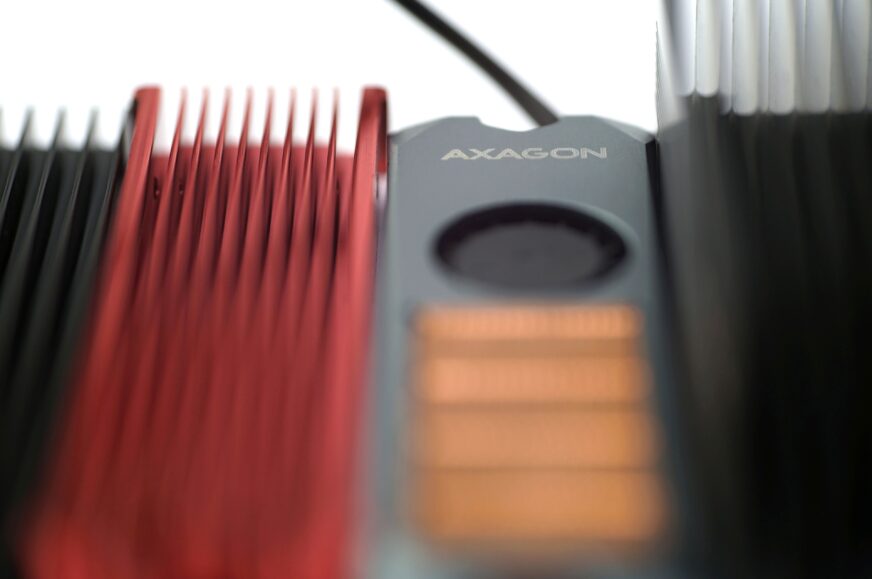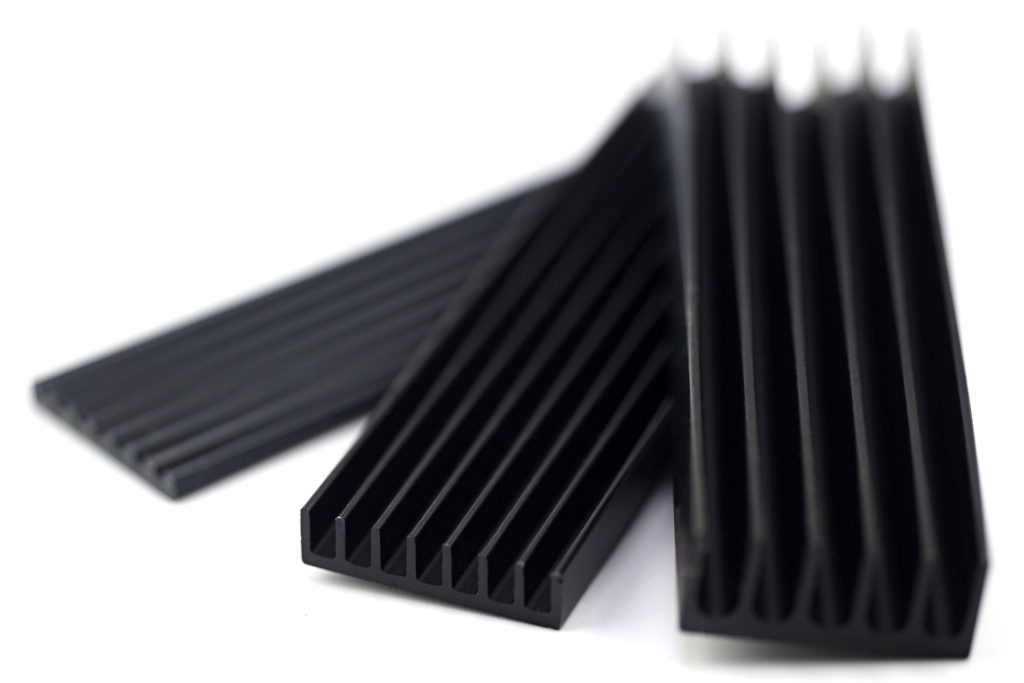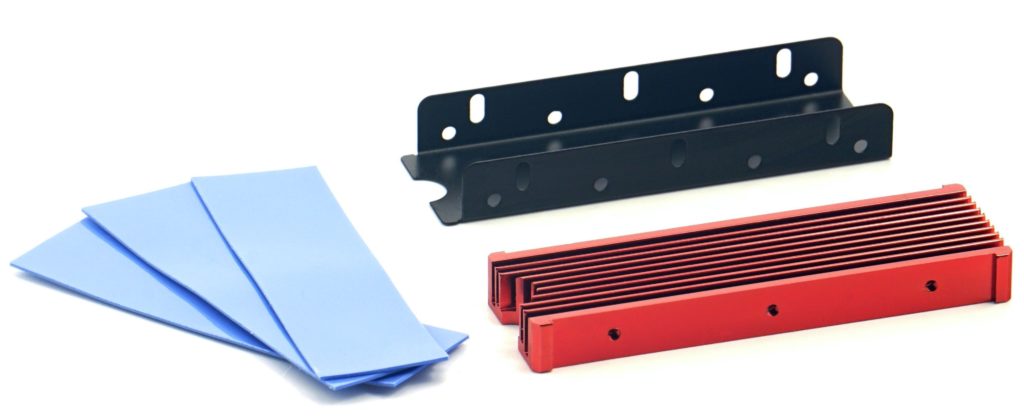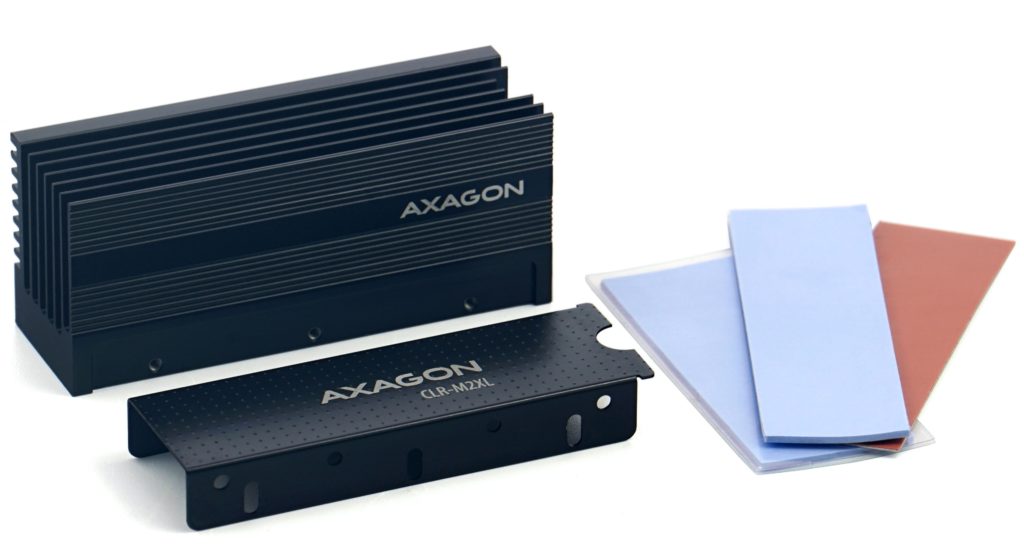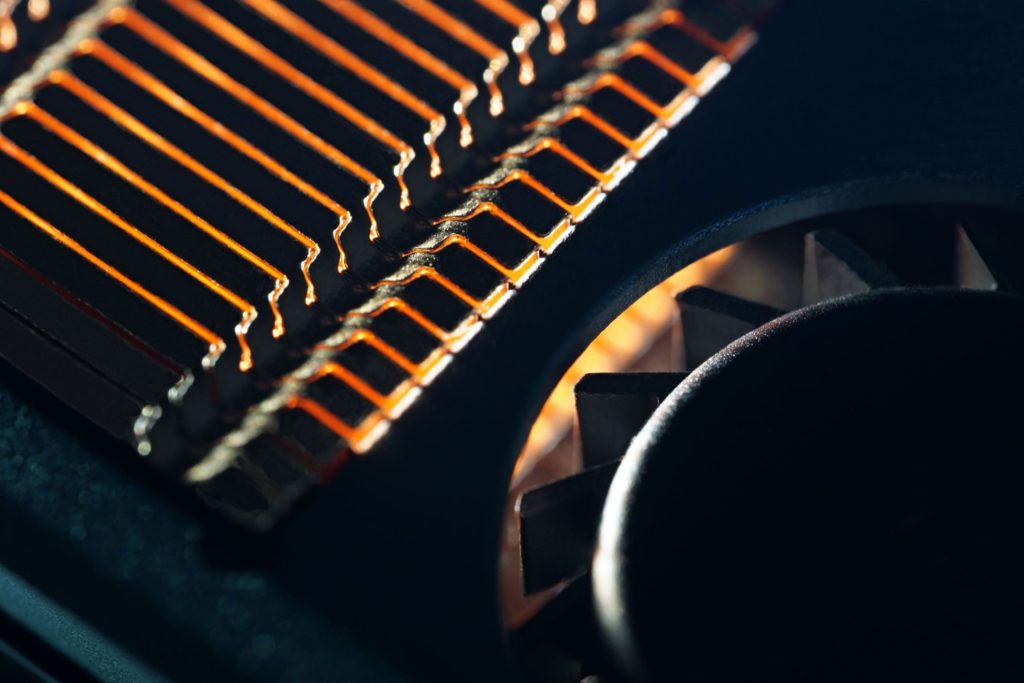SSD coolers from Axagon
Axagon’s SSD coolers are some of the best value on the market. They always have an extremely attractive price-performance ratio and, at the same time, clever technical implementation of design details. There are several options, or variants of coolers to choose from to suit different needs. For better orientation, we will now go through each model in turn and indicate for which situation which one may seem to be a suitable choice.
Disclaimer: This article was written in cooperation with Axagon in order to summarize their SSD coolers that we have already tested. Thus, the results and all interpretations in the text are our own, but since we will not verbally discuss competing solutions, we classify this publication as a PR article.
It doesn’t get any cheaper
In the spirit of “the price for an SSD cooler can be in single digits of euros”, Axagon has the CLR-M2Lx series on offer. It includes three models with different heights, from 3 mm (CLR-M2L3), through 6 mm (CLR-M2L6) and up to 10 mm (CLR-M2L10). These are aluminium profiles with longitudinal fins. The low price (4–5 EUR) is also achieved thanks to a very simple mounting system, where the heatsinks with thermal pads are fastened to the SSDs with the help of rubber bands.
Even the low profile CLR-M2L3 cooler dissipates heat well and achieves higher cooling performance than many of the coolers that come with motherboards. A good use will be where taller models won’t fit. Tight conditions are, for example, in very small computers built on mobile components or in laptops themselves. For higher cooling performance (space permitting) you can also reach for the CLR-M2L6.
If a sturdy mount is needed
The CLR-M2 is roughly on par with the CLR-M2L10 mentioned above in terms of performance, but with the advantage of a screw mounting through a backplate. This, by the way, will keep the SSD straight even if the motherboard (or its mounting system) wants to twist it in some way. Compared to the CLR-M2L10, the CLR-M2 (with 8.3 mm) is also on the lower side and thus with possibly better compatibility. You have to consider these things important enough, because for the CLR-M2 you will pay about twice the price of the CLR-M2, around 10 EUR.
Something extra for the demanding
The most powerful that Axagon has among passive coolers is the CLR-M2XL. It is especially suitable for very powerful SSDs that are heavily loaded (that is, higher operating power draw is really counted on in the long term). There is a certain disadvantage here in the 32 mm of height, for which the cooler can not be under the graphics card, but in the slot above which there is plenty of free space. But on the other hand, you won’t come across many coolers that achieve comparable cooling performance. And certainly not when it comes to the price range of around 16 EUR – you shouldn’t pay more for the Axagon CLR-M2XL.
No airflow? No problem
And finally, one active cooler, i.e. with a fan. The choice of the CLR-M2FAN should be well considered with respect to the nature of the system cooling in the case. This cooler will be especially useful in builds with lower to no system fan circulation. In conditions where airflow around the board is well provided, this cooler will fall short compared to many passive coolers due to its closed design and smaller heatsink. However, those in turn will not be able to keep up (dissipating waste heat) where the CLR-M2FAN will be like a fish in water – in tight spaces with limited airflow, such as atypical kiosk cases or in computers like NUCs. The condition is that a cooler fan can be connected to the motherboard.
The article continues with a second chapter with test results.





